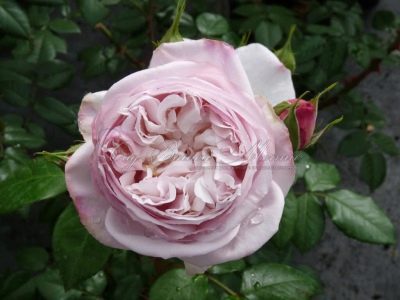
- Authors: Kordes
- Name synonyms: Herkules
- Breeding year: 2007
- Group: scrub, bush
- The main color of the flower: pink
- Flower shape: cupped
- Flower size: large
- Diameter, cm: 9
- Flower type by number of petals: thick double
- Scent: with hints of pear
It will not be difficult to grow a beautiful rose bush in the country or in the courtyard of a private house, even for a beginner, if you choose a non-capricious variety with high adaptive qualities. These are the German varieties of Hercules, which are impressive in their beauty and unusual color.
Breeding history of the variety
Hercules roses were bred by a group of German breeders of the Kordes kennel in 2007. The authorship belongs to the sons of the Kordes dynasty. This variety, despite its "youth", has received many awards at international exhibitions. In Russia, Hercules bush roses are grown mainly in the Central region, as well as in areas with a warm climate.
Description of the variety
Hercules, representing the Shraba class, is a powerful plant with erect shoots. Shrubs are characterized by good branching, abundant foliage, dark green leaves with a pronounced shine, a developed root system. A distinctive feature of the plant are arched drooping shoots with a small number of sharp thorns. In a favorable environment, rose bushes grow to a height of 120-140 cm. Due to the rapid formation of lateral shoots, the shrub takes on a magnificent appearance - a diameter of 60-100 cm.On each stem, up to 3 flowers are formed, located singly or in small-flowered inflorescences.
Advantages and disadvantages
German spray roses have not only extraordinary beauty, but also many other advantages:
high cold resistance (the plant tolerates temperature drops to -23 degrees Celsius);
strong immunity, preventing the defeat of shrubs by fungal infections;
intense aroma of flowers;
long and abundant flowering (the bushes bloom for 4 months).
The disadvantages of the culture include the tendency of rose petals to fade in the sun, as well as an average resistance to rain, in which not all buds bloom.
Flowering features
Hercules roses are very effective during flowering, which is characterized by abundance and mass. The bush blooms from mid-June to late autumn. During the growing season, the formed buds of a rounded shape and unusual color - greenish cream with reddish blotches - turn into large and beautiful flowers.
Large, densely doubled roses with 90-95 velvety petals. The shape of the flower is classic - bowl-shaped. The diameter of the rose reaches 9-10 cm. Having fully blossomed, the rose acquires a lavender-pink color, which, under the influence of the sun, changes over time to creamy pinkish or milky white. The beauty of the flowers is perfectly complemented by a pronounced aroma, which contains citrus notes, pear and green apples.
Use in landscape design
Roses are good both in single plantings and in group. The unusual color of flowers allows their use in different styles of landscape design. A bushy variety is grown in flower beds, in gardens, and on lawns. In addition, by planting densely bushes, you can get a beautiful hedge. Some gardeners grow cut roses because the flowers retain their freshness, beauty and persistent aroma for a long time.
Landing
Planting of rose bushes is planned in the spring (April-May), when the temperature has stabilized.For the bushes, a leveled, clean area is chosen where there is enough warmth and light. A rose is a sun-loving plant, but a flower bed will become optimal, where there is sun in the morning and evening, and partial shade at lunchtime. The site must be well ventilated and protected from cold winds.
For roses, light, fertile, organic-enriched soils, which are endowed with a drainage system, and are also able to pass air and moisture, will become comfortable. In addition, the acidity should be reduced. The best soil for a German rose will be black soil or light loam.
Growing and care
For growing roses, healthy seedlings are selected, and pits 50-60 cm deep are prepared. Drainage and fertilizers mixed with soil are placed in the holes. After completing the planting procedure, the seedlings are watered abundantly with warm water. Then the soil is compacted, and light mulching with peat is also performed. It is recommended to plant 3-4 bushes per 1 m2.
Cultural agrotechnology is a series of basic procedures that even a novice gardener can handle. When growing a plant, it is necessary to water it, feed it with fertilizers, loosen and weed the soil, mulch, cut branches and thin out bushes, carry out preventive measures, and also cover it for the winter.
Watering and feeding
The plant needs regular watering - once a week. In dry periods, watering should be doubled. Bushes should be fed 2-3 times per season. Roses need nitrogen in spring, and phosphorus and potassium in summer.
Pruning
Regular pruning is essential. Bushes should be freed from frozen, dry and damaged branches. In addition, wilted flowers are cut in summer, and light thinning is performed in autumn.
Frost resistance and preparation for winter
You need to cover the trimmed bushes after the temperature drops to -7 degrees. For this, burlap or agrofibre is used, stretched over a pre-installed frame over the plantings.
Diseases and pests
Strong immunity protects rose bushes from fungal diseases. The plant is not exposed to powdery mildew, rust and black spot.































































